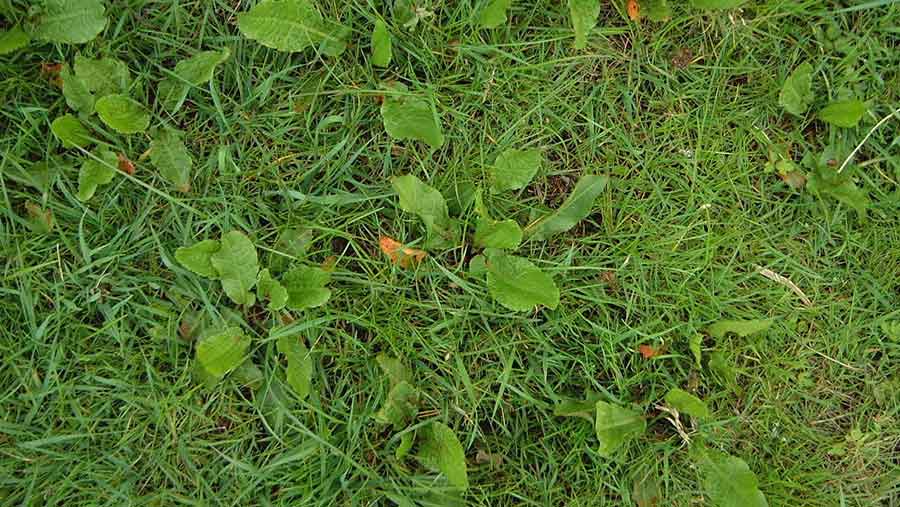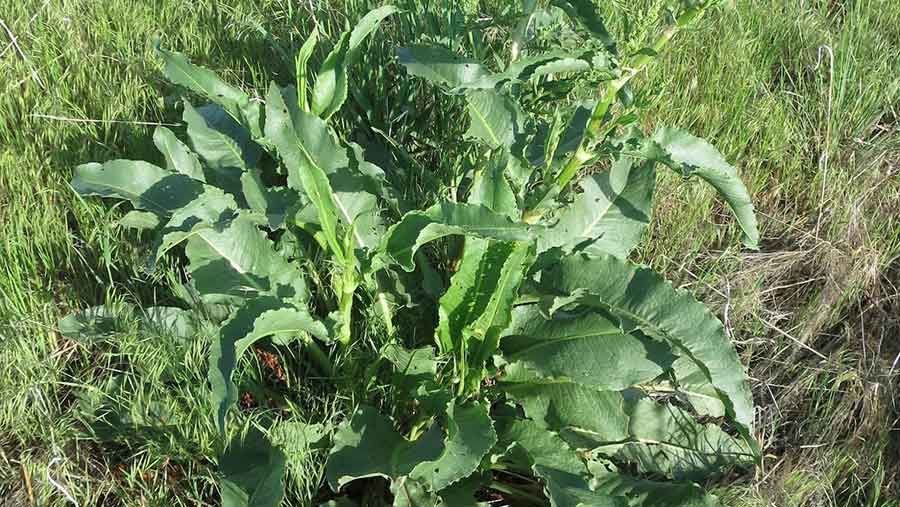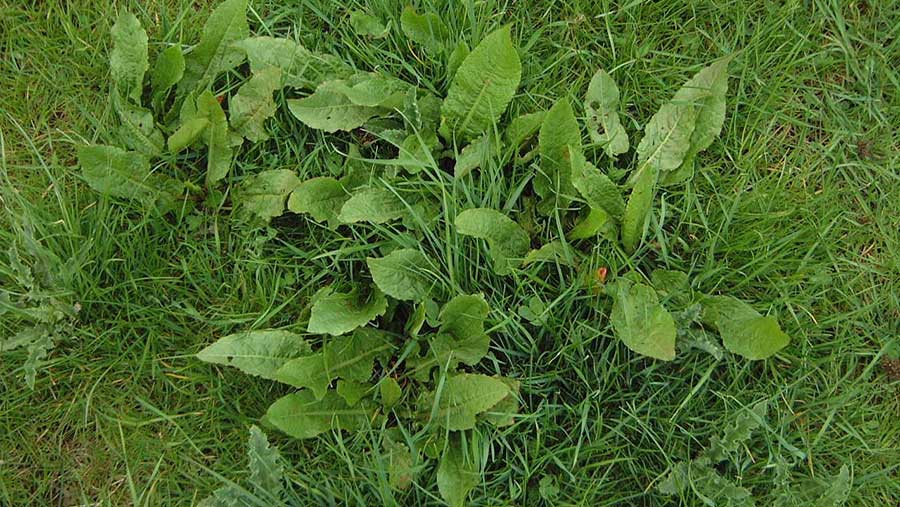How weed control can improve grass DM/ha by over 10%
Most farmers only use herbicides to “tidy up” weeds, with less than 5% of UK grassland receiving a herbicide application every year, according to the results from a recent survey.
Yet, a planned weed control programme can improve grass DM/ha by over 10%, offering a return on investment of up to 14:1 (see returns box).
In order to dissect current herbicide practices, 385 farmers – 225 herbicide users and 160 non-users – were interviewed as part of an independent survey commissioned by crop protection company Nufarm.
See also: How livestock producers in NI are making better use of grass
Results found:
- 52% of respondents said leaf colour was the main physical sign of good-quality grass
- Less than 5% of UK grassland receives a herbicide application each year
- Crop protection (16%) was the lowest ranked input when it came to improving grassland production
- 80% of those that used herbicide said they did so only to tidy up weeds
- Few farmers knew clover-safe products were available
Revealing the results at a media briefing in Crewe this week (9 January) Nufarm’s Simon Bishop said the results show that many UK farmers are still unaware of the production or economic benefits of weed management.
He added: “In the UK, grass is not considered as a crop – unlike in New Zealand.”
On the back of the findings Nufarm has launched Grassmanship – a new programme to help farmers better manage weed control.
Advice on the best timing to combat weeds as well as which products to use to counter common infestations is available in its Grassmanship booklet.
Improve your grassland management to reduce costs
At the meeting, independent grassland consultant Dr George Fisher urged dairy farmers to improve their grassland management in order to increase efficiency. Weed control, he said, is a key part of this.
He said Promar and Kingshay costings show that milk from forage in September 2017 had slipped compared with the same period in the previous year.
“The milk price has gone up and people are sliding on the efficiency scale. Don’t relax when the milk price goes up,” he warned.
Instead, he said farmers should be looking at setting themselves up for when prices fall.
Dr Fisher said every 1% increase in weed ground cover will result in a 1% decrease in grass growth.
He said controlling common weeds in a grazing sward with 10% infestation levels could therefore improve yield from 10t DM/ha to 11t DM/ha.
He calculated the return on investment could be as much as 14:1 (see returns box below). But in order to reap that level of ROI, correct timing of herbicide application is essential.
“Timing is everything. Herbicides applied too early or too late will not work as effectively, if at all,” he said.
Dr Fisher added: “This spring provides the opportunity for all livestock farmers to make more from their forage by adopting a serious approach to weed control.”
Do you need to use herbicide?
- Early assessment is important – go out to the field as soon as the grass starts to grow
- Assess weed pressure: If a sward has 10% or more weed cover then you should treat
- Dig a hole and assess soil compaction, too, as this could also be limiting your grass growth
- Choose the right product and plan for timely application (when the leaves are still growing)
Returns
Weed control costs
£20/ha to £25/ha weed control product
£13.69/ha contractor costs (NAAC 2017)
Total: £37/ha
Grazing based dairy farmer increasing stocking rate: improving yield by 10%, from 10t DM/ha to 11t DM/ha
1t DM @12ME contains 12,000MJ ME
Farmer utilisation: 80%
5.4MJ ME is required to produce one litre of milk
Additional production: 1,778 litres/ha @ 28ppl = £498
ROI: 14:1
Silage based dairy farmer increasing stocking rate: improving yield by 10%, from 10t DM/ha to 11t DM/ha
1t DM @ 10.5 ME contains 10,500MJ ME
Farmer utilisation: 70%
5.4MJ ME is required to produce one litre of milk
Additional production: 1,361 litres/ha @ 28ppl = £381
ROI: 10:1
*ROI: gaining return from an extra 1t DM/ha
Correct timing
- Herbicides should be applied when weeds are healthy and the leaves actively growing (from seedling stage to just before flowering)
- Once stem extension starts, leaf growth is insufficient for the herbicide to work effectively
- Weeds in reseeds are best controlled when the grass is at the two to three-leaf stage
- Docks and Chickweed are the two most critical weeds to control in reseeds and must be controlled at the seedling stage
- Herbicide application is essential before the first grazing

Docks – too early

Docks – too late © KH Keeler

Docks – just right
